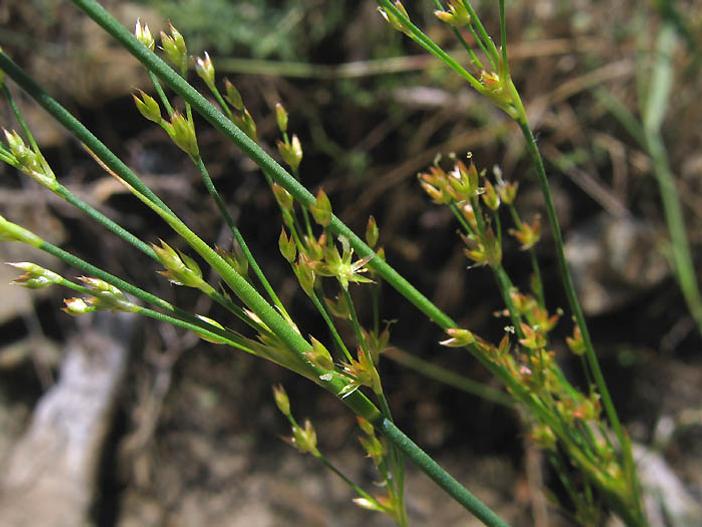Wrinkled Rush
(Juncus rugulosus)
Wrinkled Rush (Juncus rugulosus)
/
/

Anthony Valois and the National Park Service
Public domain
Image By:
Anthony Valois and the National Park Service
Recorded By:
Copyright:
Public domain
Copyright Notice:
Photo by: Anthony Valois and the National Park Service | License Type: Public domain | License URL: https://creativecommons.org/public-domain/ | Uploader: Stickpen | Publisher: Wikipedia Commons

Estimated Native Range
Summary
Juncus rugulosus, commonly known as Wrinkled Rush, is a perennial herb, native to wetlands, marshes, and riparian areas in Southern California, with small populations in the southern Sierra Nevada and Baja California. It typically grows to a height and width of approximately 3 feet (0.9 meters). Wrinkled Rush is characterized by its cylindrical, green to gray-green stems and small, brownish flowers that appear in clusters. The plant’s common name derives from the wrinkled texture of its stems. Flowering occurs in late spring to summer, and while the flowers are not particularly showy, they do add a subtle texture to the plant’s overall appearance.
Wrinkled Rush is valued for its adaptability to wet conditions and is often used in restoration projects and naturalized plantings, especially in areas that require erosion control or support for wildlife. It thrives in full sun to part shade and prefers consistently moist to wet soils. This species is relatively low-maintenance, but it is important to ensure that it does not dry out. While not commonly found in traditional garden settings, it can be a useful plant for water gardens or rain gardens.CC BY-SA 4.0
Wrinkled Rush is valued for its adaptability to wet conditions and is often used in restoration projects and naturalized plantings, especially in areas that require erosion control or support for wildlife. It thrives in full sun to part shade and prefers consistently moist to wet soils. This species is relatively low-maintenance, but it is important to ensure that it does not dry out. While not commonly found in traditional garden settings, it can be a useful plant for water gardens or rain gardens.CC BY-SA 4.0
Plant Description
- Plant Type: Grass
- Height: 1-3 feet
- Width: 1-1.5 feet
- Growth Rate: Moderate
- Flower Color: N/A
- Flowering Season: Spring, Summer, Fall
- Leaf Retention: Evergreen
Growth Requirements
- Sun: Full Sun, Part Shade
- Water: High
- Drainage: Standing, Slow
Common Uses
Bird Garden, Erosion Control, Low Maintenance, Water Garden
Natural Habitat
Wetlands, marshes, and riparian areas in Southern California, the southern Sierra Nevada, and Baja California
Other Names
Common Names:
Scientific Names: , Juncus rugulosus, Juncus dubius f. rugulosus,
GBIF Accepted Name: